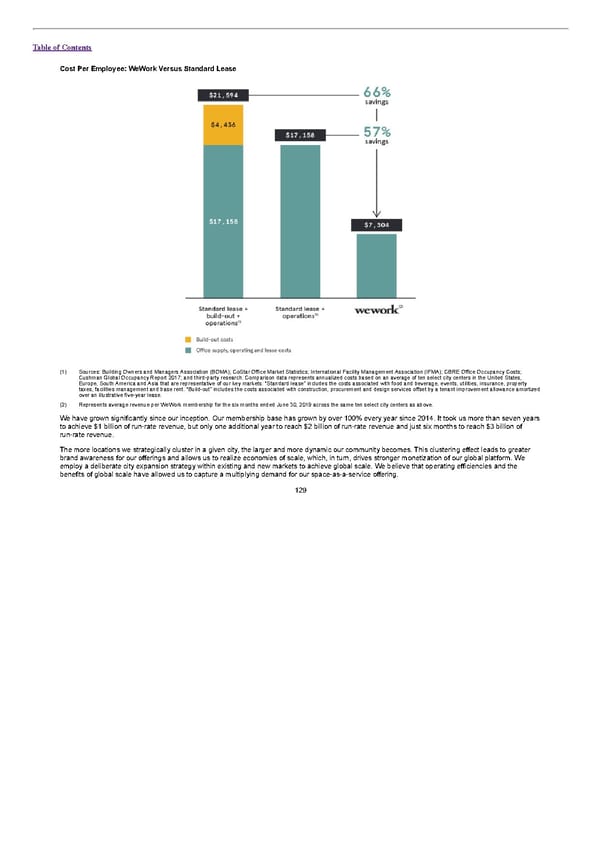Table of Contents Cost Per Employee: WeWork Versus Standard Lease (1) Sources: Building Owners and Managers Association (BOMA); CoStar Office Market Statistics; International Facility Management Association (IFMA); CBRE Office Occupancy Costs; Cushman Global Occupancy Report 2017; and third-party research. Comparison data represents annualized costs based on an average of ten select city centers in the United States, Europe, South America and Asia that are representative of our key markets. “Standard lease” includes the costs associated with food and beverage, events, utilities, insurance, property taxes, facilities management and base rent. “Build-out” includes the costs associated with construction, procurement and design services offset by a tenant improvement allowance amortized over an illustrative five-year lease. (2) Represents average revenue per WeWork membership for the six months ended June 30, 2019 across the same ten select city centers as above. We have grown significantly since our inception. Our membership base has grown by over 100% every year since 2014. It took us more than seven years to achieve $1 billion of run-rate revenue, but only one additional year to reach $2 billion of run-rate revenue and just six months to reach $3 billion of run-rate revenue. The more locations we strategically cluster in a given city, the larger and more dynamic our community becomes. This clustering effect leads to greater brand awareness for our offerings and allows us to realize economies of scale, which, in turn, drives stronger monetization of our global platform. We employ a deliberate city expansion strategy within existing and new markets to achieve global scale. We believe that operating efficiencies and the benefits of global scale have allowed us to capture a multiplying demand for our space-as-a-service offering. 129
 S1 - WeWork Prospectus Page 152 Page 154
S1 - WeWork Prospectus Page 152 Page 154